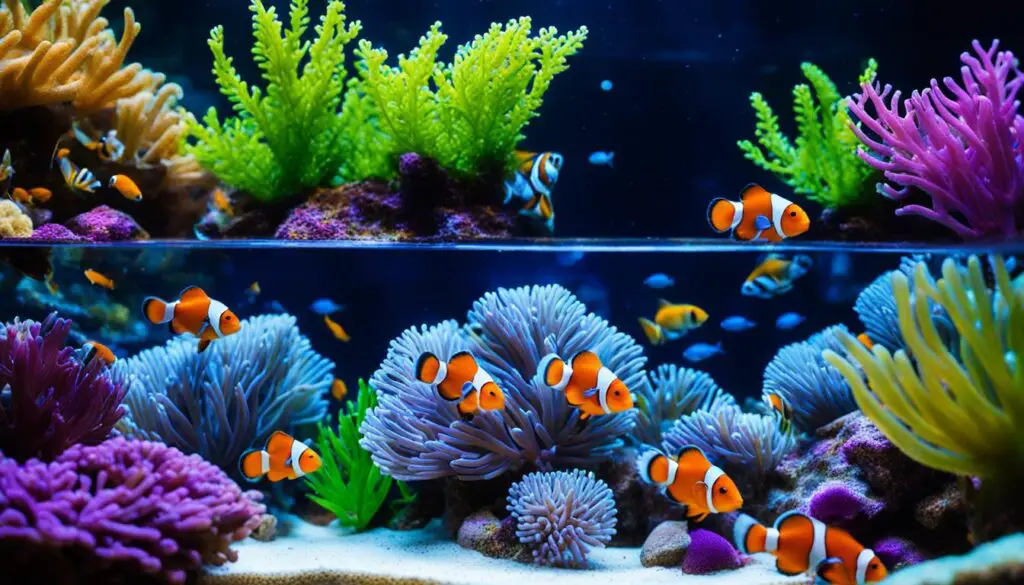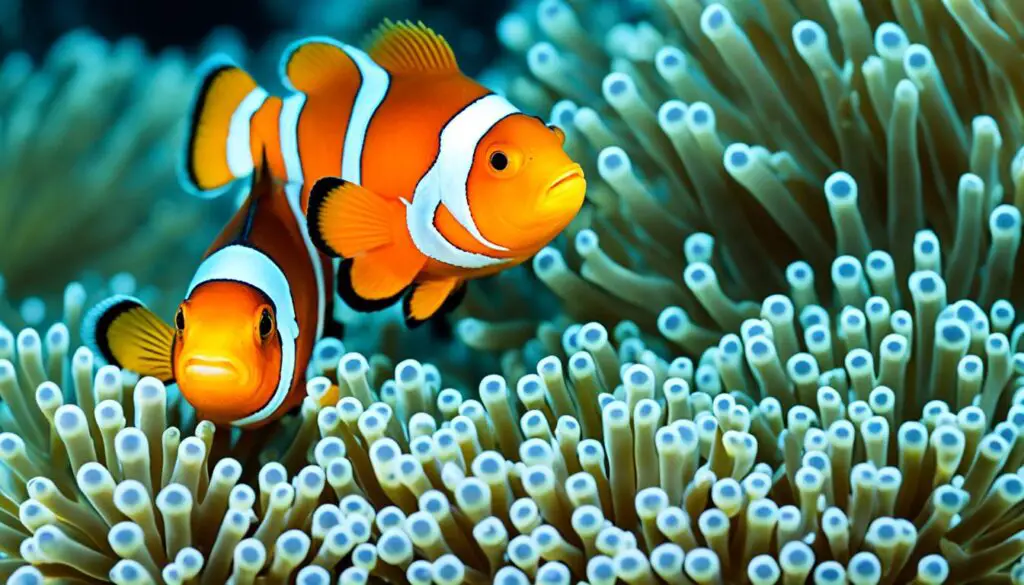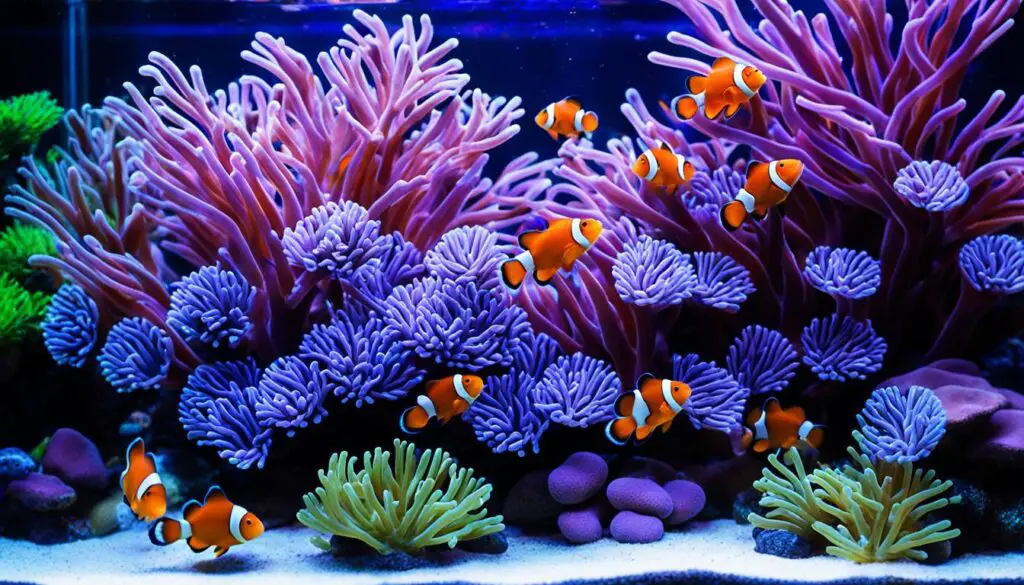Meet the Stars: A Complete Guide to Clownfish Species
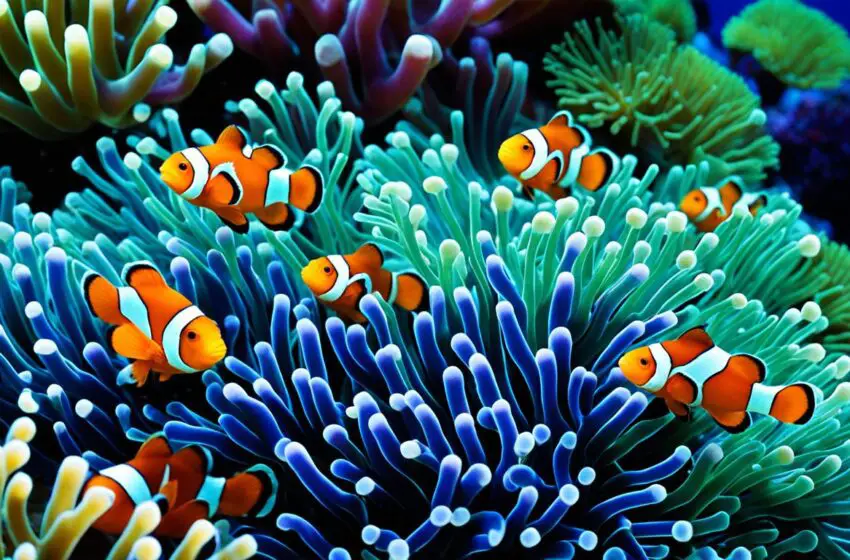
Clownfish, or anemonefish, are known for their bright colors and unique look. They are a favorite among those who love the sea. In this guide, we’ll dive into the world of clownfish. We’ll look at the different kinds and how to take care of them.
There are many types of clownfish, each with its own colors and designs. The Orange Clownfish and the False Clownfish are very popular. They have bright shades of yellow, orange, and even red. Some have neat white lines or spots. Clownfish attract a lot of attention under the sea because of their vivid colors.
There are 30 different kinds of clownfish, grouped under two main genera. Knowing about their specific needs and behaviors is key. This helps in making their living space just right for them to be happy and healthy.
Key Takeaways:
- Clownfish, also known as anemonefish, come in various species, each with unique colors and patterns.
- The most well-known species include the Orange Clownfish and the False Clownfish.
- Clownfish species exhibit vibrant colors like yellow, orange, and reddish shades, with some displaying white bars or patches.
- There are 30 species of anemonefish, with one belonging to the genus Premnas and the rest falling under the genus Amphiprion.
- Understanding the specific requirements and behaviors of each species is essential for successful clownfish care.
Habitat of Clownfish
Clownfish, known as anemonefish, live in warm waters of the Pacific and Indian Oceans. They are found in the Red Sea, the Great Barrier Reef, and places like Southeast Asia, Japan, and the Indo-Malaysia region. They prefer rocky bottoms or coral reefs in waters less than 39 feet deep.
It’s key to know clownfish’s natural home to make a good aquarium for them. To keep them healthy, you need to copy their warm-water environment. This means keeping water at the right temperature, salinity, and pH levels.
To make clownfish feel at home, you’ll need the right tank gear. For example, good filters, proper lights, and live rock and coral decorations. These items help create a colorful and lively space like their original homes.
When setting up a clownfish home, think about who their tank friends will be. Not all clownfish get along with all fish. Some are quite territorial. Check what fish can live together peacefully to avoid problems.
Recreating the Clownfish Habitat
To make the best home for clownfish, think about these points:
- Clownfish like it warm, between 75°F and 82°F (24°C and 28°C). An aquarium heater keeps the water right.
- They also like a salinity of 1.020 to 1.026 specific gravity. Test the water often to keep it in this range.
- Clownfish need clean, well-aerated water. A strong filter and regular water changes help with this.
- Put in places for them to hide, like live rock and coral. Some clownfish need specific anemones for safety and shelter.
- Set up lights that imitate natural sunlight. This helps them stick to their daily routines from the wild.
Creating the right environment for clownfish makes for a happy tank. Watch them and their friends closely. Make changes if needed to keep everyone thriving.
| Species | Native Region |
|---|---|
| Amphiprion percula (Orange Clownfish) | Great Barrier Reef, Southeast Asia |
| Amphiprion ocellaris (False Clownfish) | Red Sea, Great Barrier Reef |
| Premnas biaculeatus (Maroon Clownfish) | Red Sea, Indo-Malaysia region |
| Amphiprion melanopus (Cinnamon Clownfish) | Red Sea, Southeast Asia |
| Amphiprion nigripes (Maldive Clownfish) | Indian Ocean, Southeast Asia |
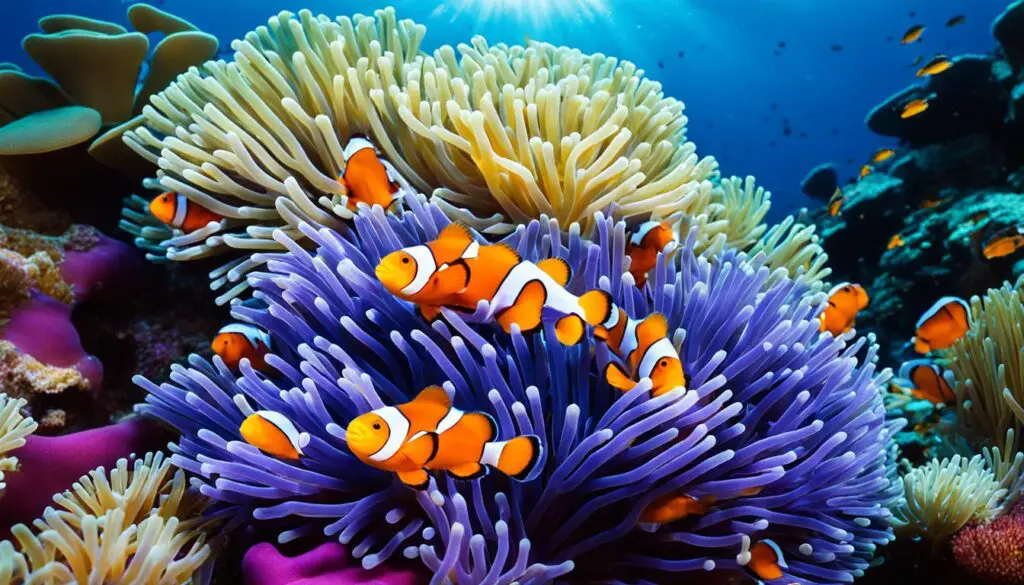
Anemones and Clownfish
Clownfish and anemones have a very interesting partnership. Anemones both provide a home and keep the clownfish safe. They act as a shield with their stinging tentacles. What’s cool is that the clownfish have a layer of mucus that stops these stings.
The clownfish help their home too. They keep the anemones clean and provide them with important nutrients. This shows how they work together in a give-and-take way. Their cooperation is amazing to see in the sea world.
Not every clownfish can make friends with anemones. Different clownfish species like different anemone homes. It’s like choosing where to live in the ocean. This choice shows how complex and special their relationships are.
Some clownfish don’t need anemones to survive. They’ve learned to live in other places like coral or among rocks. These clownfish are proof of how clever and adaptable sea life can be.
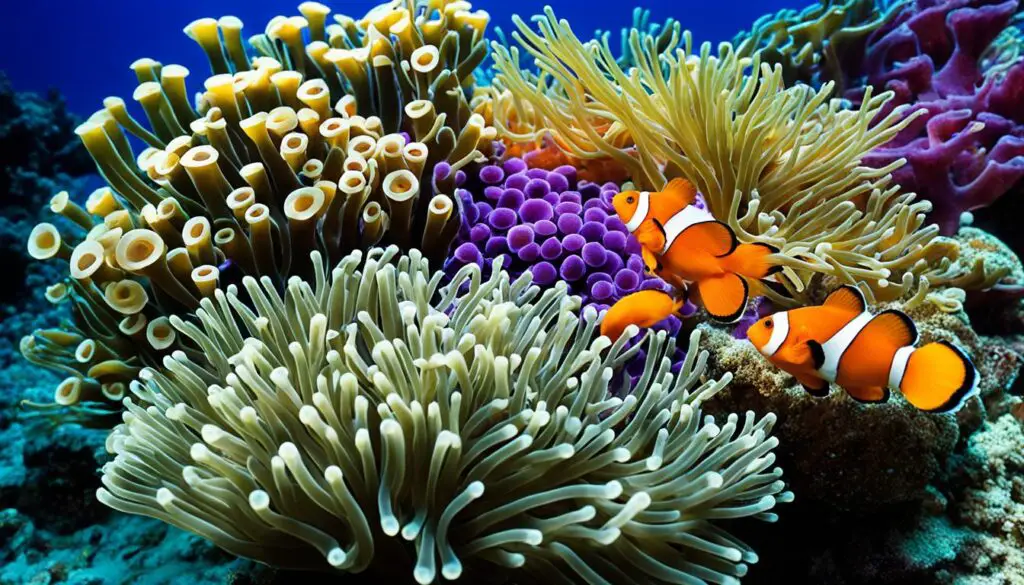
| Clownfish Species | Preferred Anemone Species |
|---|---|
| Amphiprion percula | Heteractis magnifica, Entacmaea quadricolor |
| Amphiprion ocellaris | Heteractis magnifica, Entacmaea quadricolor |
| Amphiprion bicinctus | Stichodactyla mertensii |
Conclusion
Caring for clownfish can be very rewarding. It’s crucial to know what each species needs. You should set up their tank like their natural home to keep them happy.
The right tank size and water conditions are vital. They also need a good diet. Attention to every detail in your aquarium is important for these colorful fish.
With the right care, your clownfish can live a great life. Learn about your fish and their needs. A little effort can make your aquarium a beautiful home for them.
FAQ
What are the different species of clownfish?
Various types of clownfish exist. This includes the famous Orange Clownfish and False Clownfish. Each type has its own look and traits.
Where are clownfish native to?
Clownfish come from warm waters. They can be found in the Pacific and Indian Oceans. Places like the Red Sea, Great Barrier Reef, and Southeast Asia are their homes.
What is the symbiotic relationship between clownfish and anemones?
Clownfish and anemones have a unique friendship. Anemones act as a home and protect the clownfish. In return, clownfish keep the anemones clean and give them food.
How do I care for clownfish in an aquarium?
To take care of clownfish, learn about their needs. Give them a tank that reminds them of home. Make sure the water and food are right. Also, check if they can live with other fish.

